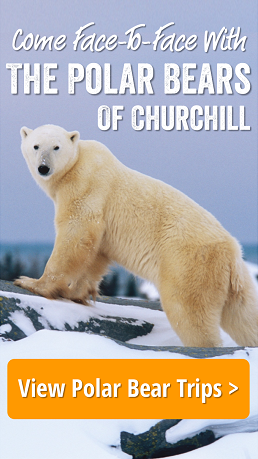by Steve Selden | Dec 18, 2014 | Churchill News
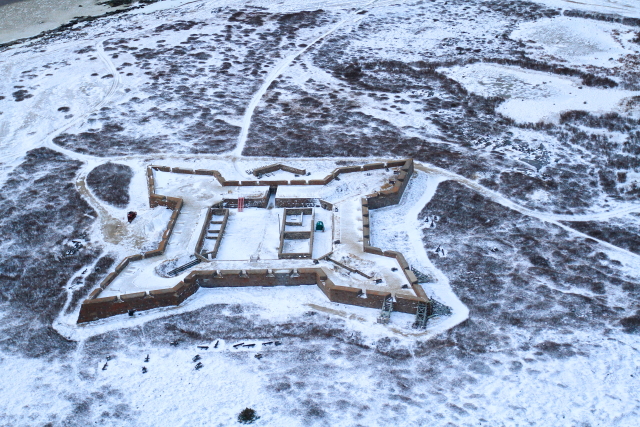
Fort Prince of Wales on the West side of the Churchill River.
If you venture to Churchill in the summertime with Natural Habitat Adventures there’s a good chance you’ll travel cross-river and tour Fort Prince of Wales with a guided interpretation from a Parcs Canada ranger. An intriguing and somewhat comical history endures.
In 1717, just a few years after the Treaty of Utrecht returned all Hudson Bay posts to England, James Knight from the Hudson Bay Company built the ” Churchill River Post” and it was renamed “Prince of Wales” two years later. The initial trading post/fort was constructed to pretty much take advantage geographically of the more northern location and general accessibility to multiple regional fur traders and native trappers.
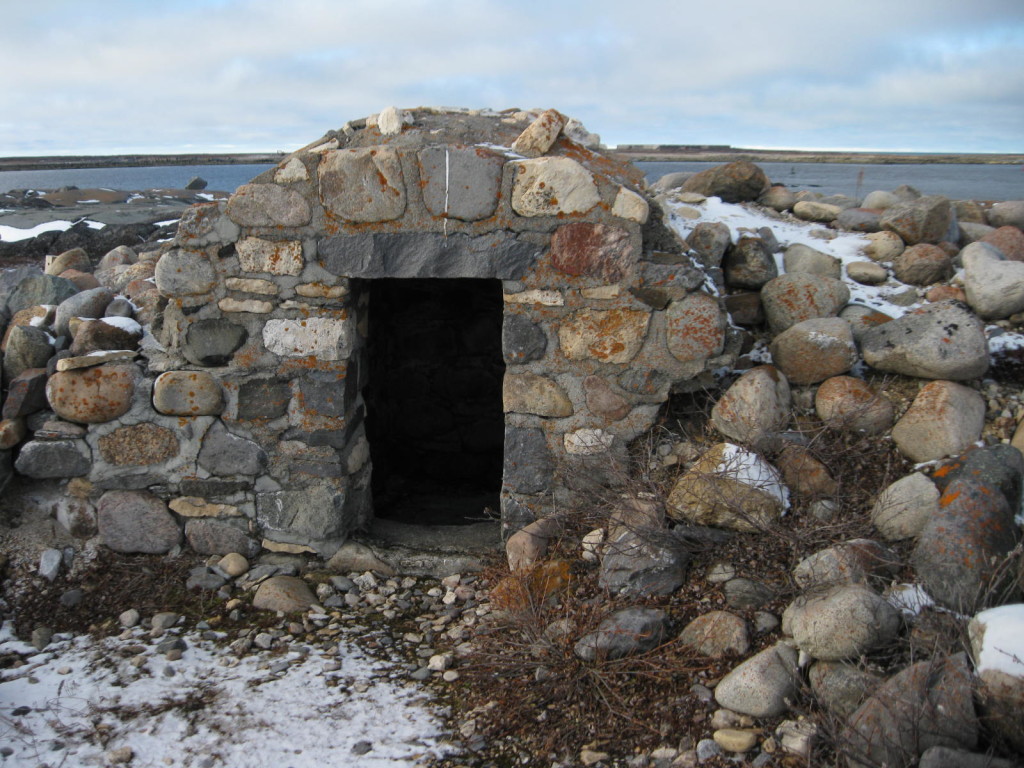
Ammunition cache at Cape Merry for cannon protection of Fort prince of Wales. Karen Walker photo.
With the ongoing feud and battle to control the fur industry between the french and English, the need for a stronghold of greater security seemed like a good idea.
In 1731 construction of the current day Fort Prince of Wales began out on Eskimo Point at the mouth of the Churchill River. A mere 40 years later the four-meter-thick stone walls were completed and the 40 cannon mounts were in place. Nearly unbearable winter living conditions made the construction process less than expeditious. With the sparseness of trees in the area, gathering firewood for heat also was a laborious task. If we could hear the stories from those days.
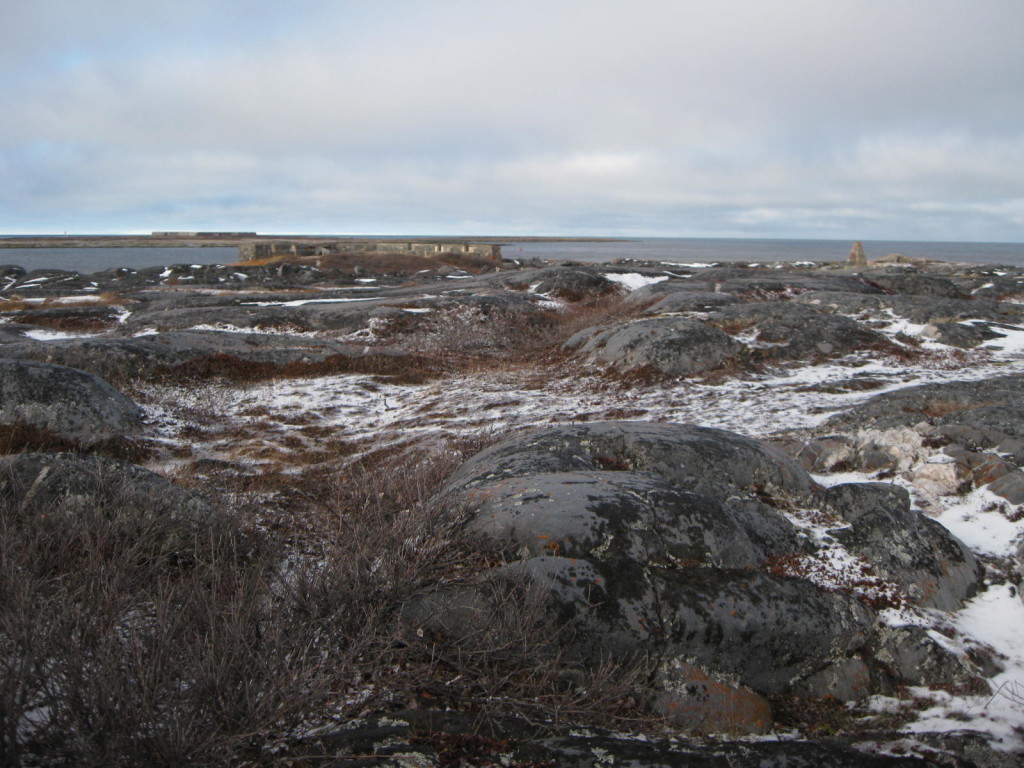
A view across the Cape Merry barrens past the battery and to Fort prince of Wales.
The star fort design, originally conceptualized in the mid-15th century in Italy worked quite well in covering all angles of attack with cannons. Walls were constructed low and thick to withstand cannon fire. A deep ditch surrounding the fort was to compensate for the lower walls.
The grand irony of the entire project culminated in 1782 when three French warships commanded by general La Perouse captured the fort without a single shot being fired. During the whole construction process, the minor details of training the stationed men how to fire a cannon seemed to slip through the cracks. Again, with the severe weather conditions, one can only imagine how basic survival during construction trumped all other endeavors.
In 1934 the process of reconstructing the partially demolished and downtrodden fort began. That process has restored the fort to a most presentable condition. In recent years, an intense archeological effort has produced incredible artifacts used to paint a more vivid picture of life in the 18th century.
by Steve Selden | Dec 17, 2014 | Tour News, Videos
Take a look at this 2012 phenomenal video documentary by videographer Snorre Wik with additional filming by Jens Christiansson and Marco Tedesco with his research team. Greenland has the world’s second largest ice sheet just behind Antarctica. The percentage of surface ice melt reached an alarming ninety-seven per cent in the summer of 2012. The footage within the documentary, a national Emmy award nominee in 2012, is breathtaking, disturbing and motivational. With the new year on the horizon, we all need to take a serious, urgent look at how we each can make a difference and cut down our carbon footprint. Take a look at this oddly inspiring film ….then make a resolution!
by Steve Selden | Dec 16, 2014 | Churchill Photography
Everyone is still buzzing about the polar bear season that came to a close the third week of November. A relatively smooth season overall for Natural Habitat Adventures culminated with the last of the bears being released from the polar bear compound onto the Hudson Bay pack ice. Here are some more photos from a very memorable season.

A sun dog casting its’ rays on an inukshuk. Brad Josephs photo.

Two coy frolick in the willows. Colby Brokvist photo.

Polar bear sniffing around the polar rover. Brad Josephs photo.

Polar bear print in the snow. Karen Walker photo.

Polar bears in sparring mode. Colby Brokvist photo.
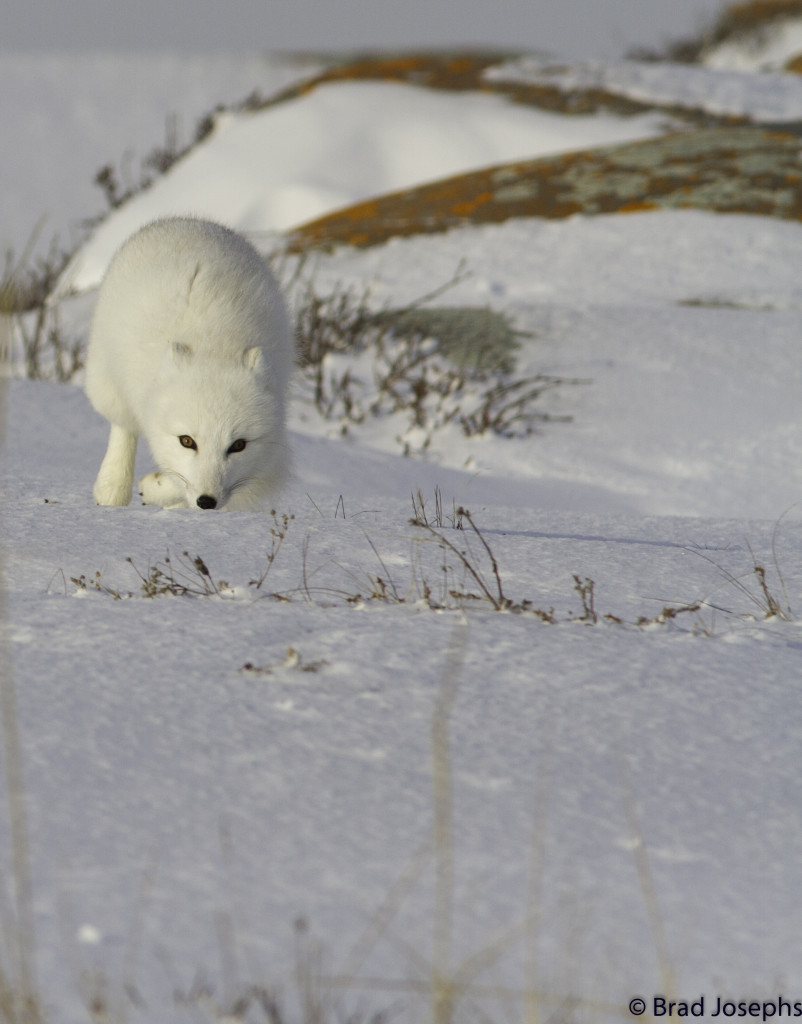
Arctic fox sniffing the tundra for prey. Brad Josephs photo.
by Steve Selden | Dec 15, 2014 | Churchill Photography

Polar bears sparring on the Churchill Tundra. Brad Josephs photo.
Being prepared with all the right gear is the best photo tip I can offer from years of working with professional photographers in the field. If you’re not a full-time wildlife photographer that could be tricky. As we all know ,camera gear is pricey, so when going on an once -in – lifetime trip like Churchill to see polar bears, renting equipment might be the best option.

You don’t need to spend a ton of money on different filters, meters or other accessories but you should absolutely try and acquire the longest lens you can. A 600 mm or even a 800 mm or longer lens to get up -close and personal would be optimal.

The FL 880 f/8 provides high contrast even at pictures taken at long distances.
Many times you are close enough in the polar rovers to utilize general photography lenses such as 200-400 mm telephoto types. However, to capture many of the shots like the sparring bears above from Natural Habitat guide Brad Josephs you need the longer lenses. Again, if you are not going to be using the lens on a regular basis, consider renting for the week of the trip. It’s well worth the expense to get those amazing shots. Mixing the up-close photos with the landscape and horizon shots allows you to tell a deeper more personal story with your camera.
by Steve Selden | Dec 14, 2014 | Churchill News
Churchill, Manitoba is the place to see polar bears. In the beautiful, temperate months of October and November the town welcomes a few thousand travelers from Natural Habitat Adventures and other wildlife tour companies on a mission to see polar bears. Almost all leave with amazing memories of the king of the Arctic…the polar bear!
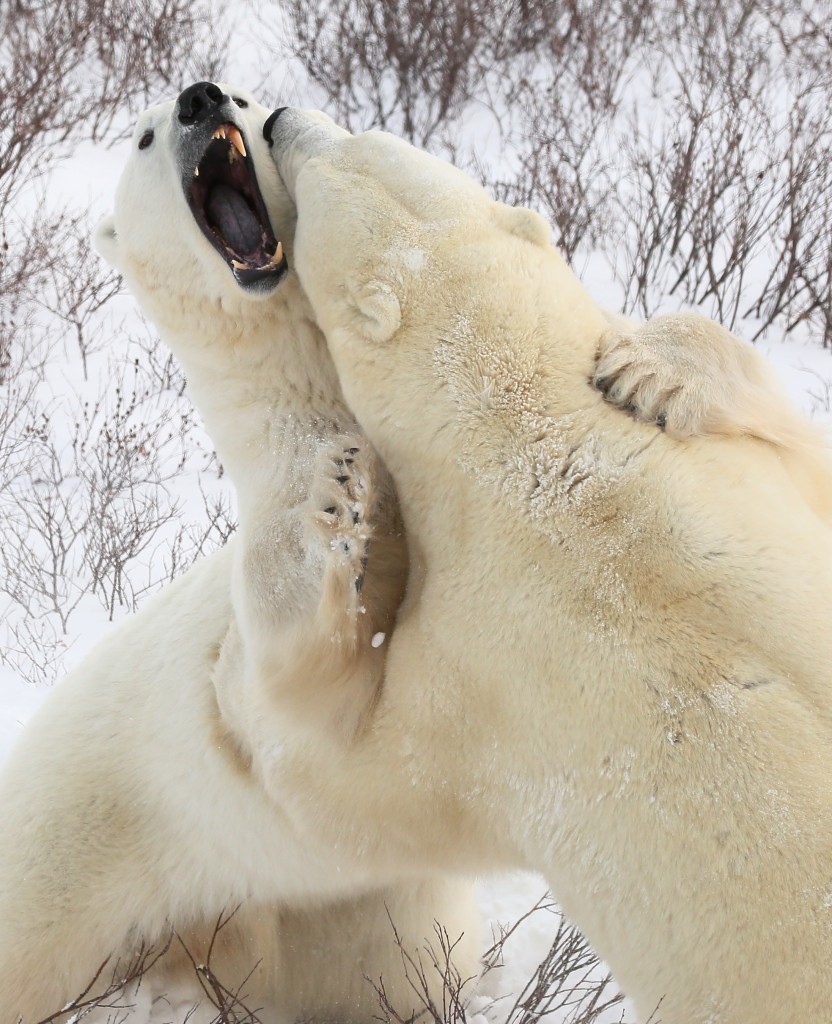
Sparring bears in the CWMA. Melissa Scott photo.
However, Churchill can be deceptively inviting and even dangerous at times for those taking unnecessary risks. No, I’m not talking about the Canadian Legion on a Saturday night…although I have personally experienced that northern “wildlife”. I am talking about polar bears…hungry polar bears at that. So, if you come to Churchill to see the Arctic king, the great white bear, stay alert, be cautious and don’t wander out of town without protection.
1.– Don’t go for an early morning hike to Cape Merry or some other place outside town limits. You probably wouldn’t play Russian roulette at home….so why would you take similar risks far away in a place you don’t know so well? Chances are you could walk the few kilometers there and back without getting mauled or slain by a polar bear but then again it only takes one bear.
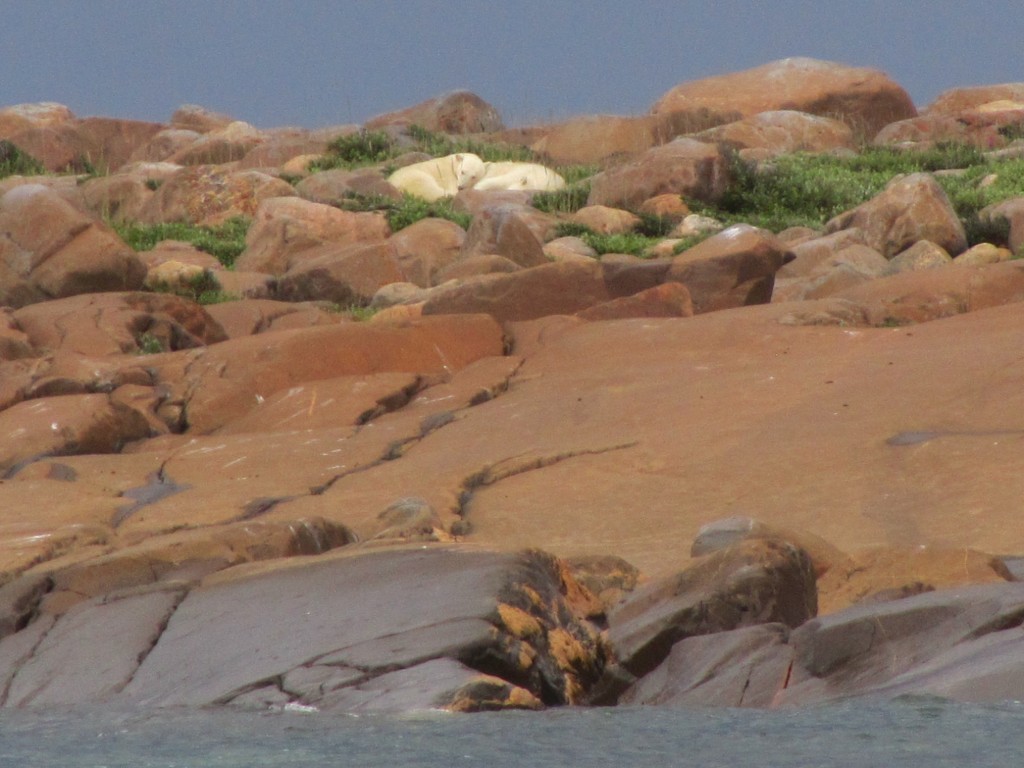
Polar bears on Eskimo Point. Stephanie Fernandez photo.
2.– When you leave your house or residence in the dark, look both ways. Also, try to park the driver side door facing your house door for easy access Polar bears are notorious for sneaking into the town in the wee hours of the morning when most people are sleeping and Manitoba Conservation officers are sleeping as well. Most people in Churchill leave their doors unlocked for anyone facing a surprise polar bear encounter. It’s Kind of a custom in Churchill.

A polar bear trap being removed with cargo from Churchill.
3.– No strolling along the precambrian shield on the coast of the magnificent Hudson Bay. The rolling, polished granitoid rocky coastline can provide really nice sleeping or resting spots for bears. And they really don’t take kindly to surprise wake up calls. The surprise will quickly be yours.
4.– Don’t drive a ATV along the coast road…in a thick fog. Been there, done that on the way to the annual old laboratory party out by the airport hosted by infamous researcher and professor Paul Watts. Couldn’t see three feet in front of the vehicle the whole way out along the coastal road. One of the scariest yet thrilling things I’ve done with my fleece on. Oh yeah…party was rocking too. The ATV came back in the back of a pick up truck.

Polar bear attempting to maul me in a vehicle. Steve Selden photo.
5.– If you want to be a wildlife photographer for long, keep the windows rolled up when shooting polar bears from a vehicle other than when a polar rover. In the old days in Churchill many photographers would get their money shots out at mile 5 or Brian Ladoon’s dog- yard. Myself and Brendan O’Neill, working logistics for the polar bear season many years ago, got a terrifying thrill one day when a polar bear approached our unnamed photographers van and tried to crawl through the window. One of my first bear experiences in Churchill….two underwear day!
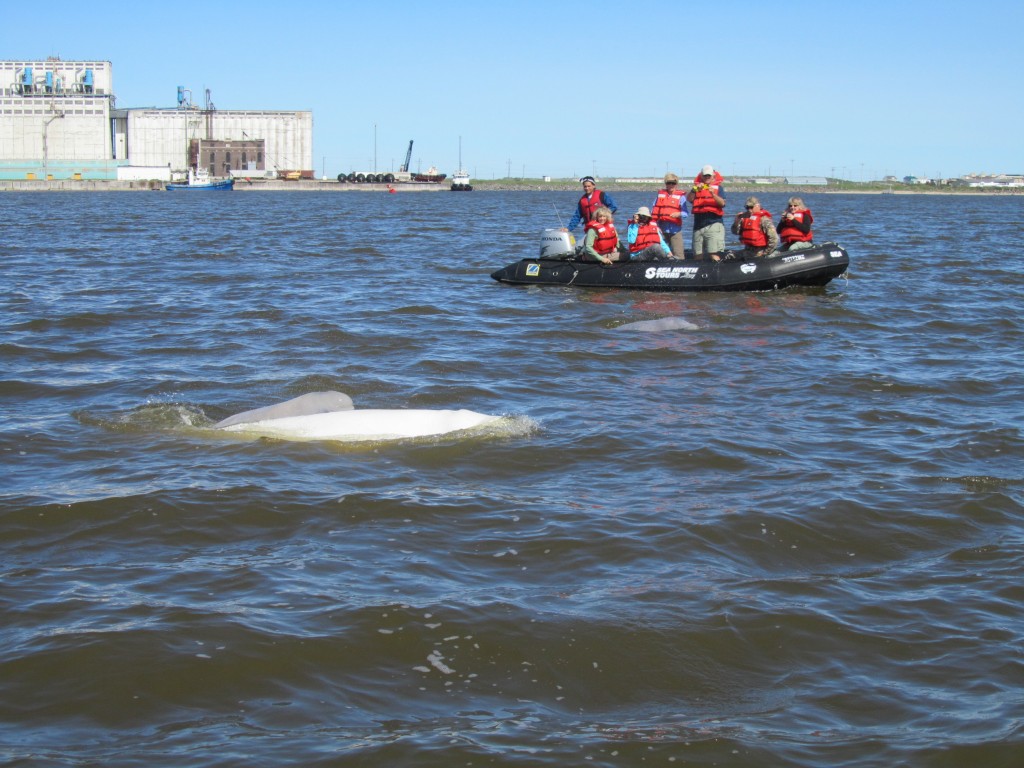
Natural Habitat travelers beluga watching in the Churchill River.
6.– Bonus.. Stay away from swimming polar bears in the summer when you have a group of travelers in a rubber zodiac looking for beluga whales. Polar bears submerge for what seems like an eternity. They can hold their breath for up to two minutes. If you get close enough the bear could surface anywhere within 20 feet or so….not fun. It’s a similar feeling to the old video Asteroids game when you hit hyperspace and hope you don’t reappear next to a huge asteroid ready to blow up your ship.
There are many more places than these that you don’t want to encounter a polar bear. However, if you use common sense and respect their territory, all should go well and your memories will all be good.
See polar bears in the wilds of Churchill, Manitoba…go to nathab.com.
by Steve Selden | Dec 12, 2014 | Conservation
Let’s face it, “cold” is what the Arctic does best….especially to those living below this amazing region of our planet Earth. So, other than the hearty mammals, particularly the mighty polar bear and humans, very few birds overwinter at high latitudes. Less than 10% of all birds that venture to Arctic and sub-Arctic regions unpack their bags and set up a permanent home there.
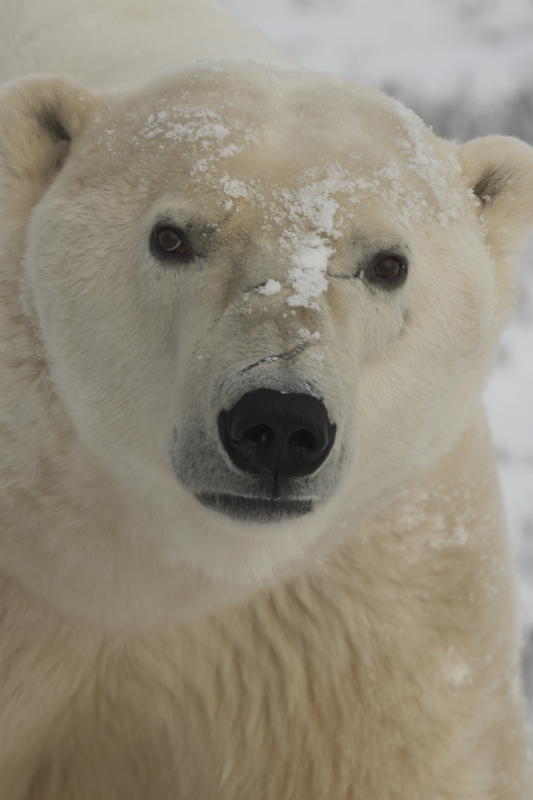
Polar bears are the king of the Arctic. Photo: Paul Brown
Birds that do either have some hearty DNA or have developed some unique ways to cope with cold temperatures that can dip to -55 Celsius. Most of you know the raven can subsist just about anywhere on the planet and the intelligence and intuitiveness of this creature has been well documented. He is truly the sentinel of true survival…especially as his shining black defiantly glares out against the snowy north.
Rock and willow ptarmigan can be seen in Churchill as the fall arrives and throughout the winter, changing to their winter’s best camouflage white. Ivory and the illusive and highly prized Ross’s gull also stay put for the winter. I’ve spotted the Ross three times in over a decade of guiding Natural Habitat Churchill summer trip. All three times the sightings were facilitated by Churchill birding master and legend Bonnie Chartier when we worked together up north.
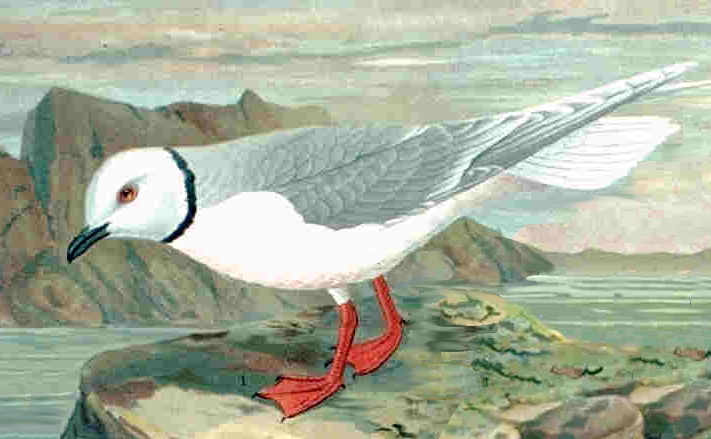
The Common and hoary redpoll, Brunnich’s Guillemot, Little Auk and Black Guillemot also inhabit the Arctic full-time. Snow buntings and gray jays are quite friendly species that call Churchill home all year. Higher up in Greenland the birds tend to shelter in utility tunnels known as utilidors.
Boreal chickadees and occasionally boreal owls and great horned owls inhabit the boreal forest. And, the mighty gyrfalcon, the fourth fastest bird on the planet…er off the planet, can be seen sporadically hunting or soaring from point to point. I have seen this bird dart across the Churchill tundra and even through town.

Gyrfalcon on the tundra in Churchill,MB.Paul Brown photo.
The most intuitive behavior exhibited for warmth and survival is how ptarmigan and common hoary redpolls take shelter in snowdrifts and endure the frigid cold by utilizing the snow as insulation. Ptarmigan and Snowy Owls grow leg and feet feathers to keep them warm throughout the winter months. They also change plumage from dark to white in order to stay camouflaged and safe from predators.
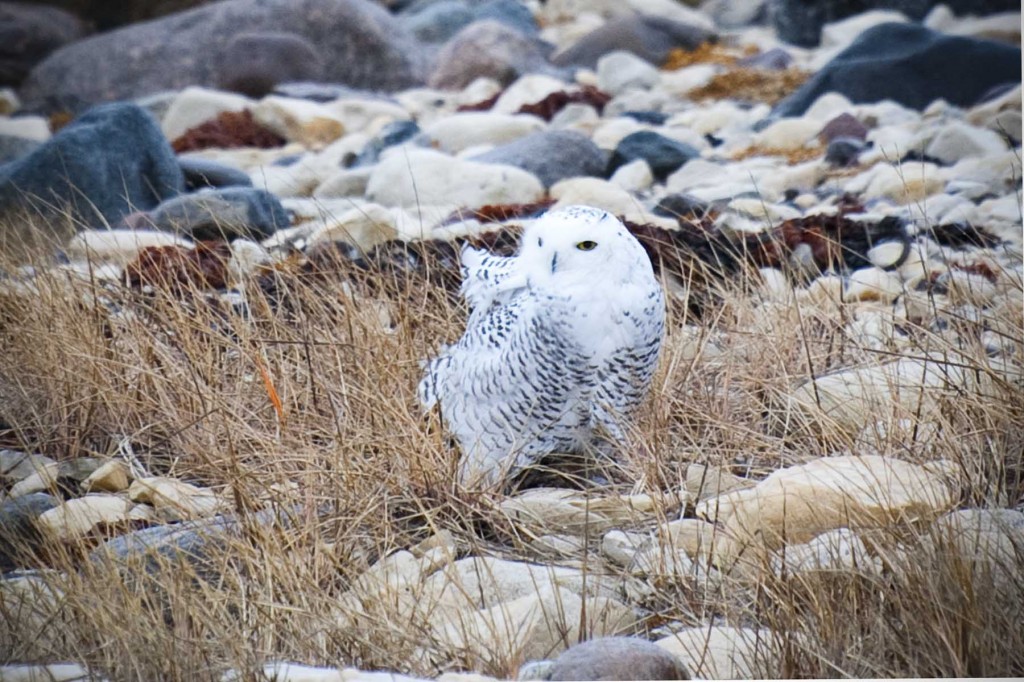
Snowy owl greets virgin travelers to the north. Colby Brokvist photo.
The summer months are reminiscent to a beach-side resort with the bird population ballooning by more than 200 additional migrant species arriving in early spring. These are birds that cannot survive the harsh conditions of winter in the far north though return each year to take advantage of the bounty of food sources thriving in the Arctic summer. The most incredible journey is clearly that of the Arctic tern…making the pole to pole round trip of nearly 45,000 miles.

Arctic tern hovering above the nesting grounds. Rhonda Reid photo.
Many of these species arrive early and set up nests for the short but productive breeding season. With snow cover still prevalent, these hearty nurturing parents live off their stored fat reserves for energy. The majority of the Arctic and sub-Arctic species are wetland feeders such as various ducks, swans and geese. Waders and shorebirds also scour the marshes and shoreline plucking all the organisms they can from the Earth.






















